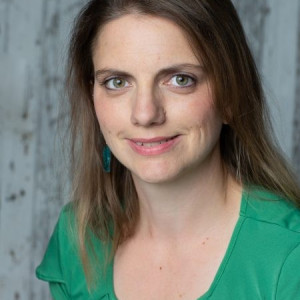What tools do you use to stay productive?
Interview with Liz, a UI/UX designer and cowork advocate
I have several Trello boards going at one time, and I use Asana to keep track of my freelance work projects. I’m also an avid user of team chat software Slack and Flowdock. They are both integral to being able to communicate effectively with a fully remote team.
Liz is a traveling UI/UX designer—see her strategy for thriving as a digital nomad and her efforts to promote coworking.
Read full interview from Interview with Liz, a UI/UX designer and cowork advocate.
Interview with Digital Nomad Sage, an entrepreneur and UX consultant
I use a ton of tools to stay productive. Here are a few:
-
Microsoft Office for when I do benchmarks on companies or write UX reports.
-
Hootsuite for social media marketing.
-
Canva for creating social media posts quickly!
-
Survey Monkey for when I reach out to users when I conduct UX Research via surveys.
-
Adobe Creative Cloud for when I need to make graphics and edit videos. This software suite is amazing!
-
Publisher Rocket for when I need to do keyword research for my ebooks.
-
Divi for when I need to create new websites quickly. No need to code!
-
Udemy to learn new skill sets. Super cost-effective way to invest in yourself! You can often find discount coupons on the internet to where you can get courses for only $9.99
-
Balsamiq Wireframes for when I need to make Wireframes of apps or websites.
-
Amazon Advertising for running Sponsored Ads for my ebooks.
From e-books to blogging, Digital Nomad Sage has become an expert on making money online—see his advice for developing an online business.
Read full interview from Interview with Digital Nomad Sage, an entrepreneur and UX consultant.
Interview with Betsy, a head of content and remote work routine expert
I like to keep things pretty simple so I only use a few tools.
In terms of organizing tasks and ideas, I think that my paper planner is still my #1 way of staying productive but I also really like Evernote and Trello. Since I work with so many different teams, I find that Evernote is great for keeping each of my separate projects organized.
For my blog, I love using Trello to organize my editorial calendar and brainstorm new ideas.
For communication, I use Zoom for meetings and conference calls and Slack for updates and quick messaging.
Betsy Ramser is a content manager, blogger, and teacher who helps other remote workers thrive while creating a daily routine that works.
Read full interview from Interview with Betsy, a head of content and remote work routine expert.
Interview with Laurel about helping companies transition to remote work
Zoom for video calls (the bulk of my day), Asana for task management, Slack for team/community collaboration, and Google Calendar for Scheduling.
Offline, my "portable office" includes my Fitbit for activity tracking and top-of-the-hour reminders (nudge to wrap up meetings), glasses, water bottle, earbuds, wireless mouse, chargers, and my faithful Chromebook.
I keep all of these packed in a bag that I can take anywhere I feel like working from that day (which has included hotels, trains, the library, mountain tops, the gym, or even my kids' school).
Laurel is an advocate for remote work and helps companies learn how to work remotely through her consulting and writing.
Read full interview from Interview with Laurel about helping companies transition to remote work.
Interview with Gino, a founder skilled in building remote teams
I wouldn’t say these tools help me stay productive, per se, but they do help me stay organized which in turn has an enormous impact on productivity. For me, it’s Trello and checklists (most of the time within Trello cards).
Gino realized how important remote work could be to finding the best talent—see his strategies for building remote teams.
Read full interview from Interview with Gino, a founder skilled in building remote teams.
Interview with Paul, a remote product designer who has found his zen
The main tools I use are the Bullet Journal, supported by Google Calendar and the Time Timer. In my search to find a way to take better notes and to-do lists, I discovered the Bullet Journal (BuJo). This brought order and structure to how I captured notes and to-do lists that had previously been random and sometimes chaotic.
It looks like just a regular dotted notebook, but it's actually an analog system that helps track the things I need to do, the things I have done, and schedule them.
The act of physically writing things down is quite mindful and helps me be more intentional about what I need to do.
I also use the BuJo to write my daily gratitude log. When I am in the flow of using the BuJo, I feel in control of things. When I fall out of the flow, I don't feel as in control.
I use Google Calendar to support entries in my notebook and block out time for things that are important to me. At a high level, this breaks down to Personal / Family Time, Laser Focus Time, and Open / Collaborative Work time.
This helps to balance my week and understand when I have time to focus on things. These tools also allow me to know when I can schedule meetings or collaborative work, and when I can be with my family or have some time out.
The Time Timer is a little clock that sits next to my monitor and helps create a sense of urgency for each task.
After that, it's GSuite for communicating and collaborating with colleagues, Figma for design work and Miro for virtual whiteboarding.
I wrote more detail about this approach in "Building Blocks of Time Creating Balance and Structure for Work & Life Under the Same Roof" published on Medium
The COVID-19 pandemic drove Paul to embrace remote work. See how he has adapted his routine to this new normal, and the one tool that keeps him organized.
Read full interview from Interview with Paul, a remote product designer who has found his zen .
Interview with Katerina, a team collaboration consultant who sees the value of discipline
I use Asana and pen and paper to stay productive. I use Asana to jot down tasks I need to do, or ideas I want to develop, and pen and paper are for my daily to-do list. However, I only use the latter when I have a lot on my plate.
I plan my work one week ahead, using Google Calendar. Github is great for sharing work. Especially with myself as I work on different computers.
I participate in different Slack communities. They might not be productive, but the feeling of belonging somewhere can help to stay motivated. It's a great source of inspiration.
Katerina fell into remote work by accident - she reveals how easy and straightforward it can be to make discipline a daily part of remote work.
Read full interview from Interview with Katerina, a team collaboration consultant who sees the value of discipline.
Interview with Laura, a communications specialist and travel writer by night
I rely heavily on customized reminders from Slack known as Slackbots to remind me to do things. I like to play music while I work, too. Sometimes I play new age ambient type of stuff to keep me calm, centered and focused.
Other times I'll play upbeat music for motivation. Coffee is also a must-have for productivity. Oh! And strawberries. Strawberries keep me happy.
Laura Coronado discusses her method for juggling her career as a communications specialist by day and her side hustle as a freelance travel writer by night.
Read full interview from Interview with Laura, a communications specialist and travel writer by night.
Interview with Saibu, an HR content writer for a remote company
Personally, I don’t use tools like timers, reminders, or webpage filters. But when it comes to working at Remote Team Inc, we use a lot of tools – from Slack and Zoom to Google Docs and Desktime.
I actually answered this question recently on Quora about the tools we use to stay productive.
Hear how Saibu, a thriving HR content writer, navigates the complexities—and perks—of working with a remote team from Ghana.
Read full interview from Interview with Saibu, an HR content writer for a remote company.
Interview with Kirsten and Jay-Allen, remote team coaches & collaboration experts
- Google Calendar (and it’s reminders)
- Music apps
- Standing desk and ergonomic chair
- Putting phone and Apple Watch on silent
- Trello
It might be worth mentioning our favourite remote collaboration tools here too:
- Google slides for interactive workshops (the barrier to entry is low, the co-editing limit is high, and accessibility is easy)
- Zoom
- Mural
- Asynchronous communication - while it’s not a tool, it is a method that is really useful in remote teams, especially when there are many timezones at play.
Remote team coaches, Kirsten and Jay-Allen, offer three pieces of advice for new remote workers and reveal the one question every remote job seeker should prepare to answer.
Read full interview from Interview with Kirsten and Jay-Allen, remote team coaches & collaboration experts.









